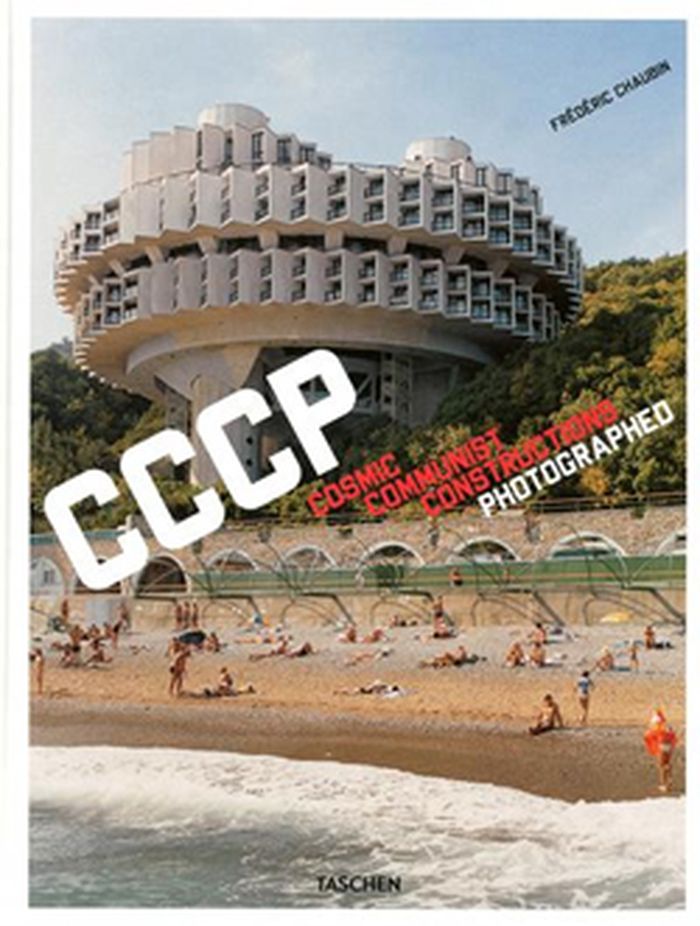The birth of graffiti
$32.00
(disponible sur commande)
Résumé:
The now global phenomenon of graffiti was first captured in New York by a professional photographer in early 1973. The result was Jon Naar's The Faith of Graffiti, the first and most celebrated book about this controversial new art form. Now the forty or so photographs in that book and more than one hundred additional never-before-published pictures from that landmark(...)
juin 2007, Munich
The birth of graffiti
Actions:
Prix:
$32.00
(disponible sur commande)
Résumé:
The now global phenomenon of graffiti was first captured in New York by a professional photographer in early 1973. The result was Jon Naar's The Faith of Graffiti, the first and most celebrated book about this controversial new art form. Now the forty or so photographs in that book and more than one hundred additional never-before-published pictures from that landmark body of work are brought together in a book destined to become a classic in its own right. Presented full-frame, at high resolution, and with meticulous attention to the original color, this book brings to life the gritty, exciting New York of the early 1970s and the raw visual power of early graffiti. While today graffiti is an accepted reality of city life--by turns condemned and embraced--these early photographs recall a time when subway cars and tenement walls seemed to explode overnight into bursts of color and energy. In most cases these ephemeral works survive only in Naar's masterful photographs. Sacha Jenkins, an authority on graffiti's history, puts these photographs in a broad historical context of an emerging youth culture that now reaches into every corner of art, fashion, and entertainment. At once nostalgic and inspirational, The Birth of Graffiti opens the way to a deeper appreciation of graffiti's historical and artistic significance.
$36.95
(disponible sur commande)
Résumé:
By United Nations estimates, 60 percent of the world's population will be urban by 2030. With the increasing speed of urbanization, especially in the developing world, scholars are now rethinking standard concepts and histories of modern cities. "The Spaces of the Modern City" historicizes the contemporary discussion of urbanism, highlighting the local and global breadth(...)
Théorie de l’urbanisme
février 2008, Princeton, Oxford
The Spaces of the Modern city : imaginaries, politics, and everyday life
Actions:
Prix:
$36.95
(disponible sur commande)
Résumé:
By United Nations estimates, 60 percent of the world's population will be urban by 2030. With the increasing speed of urbanization, especially in the developing world, scholars are now rethinking standard concepts and histories of modern cities. "The Spaces of the Modern City" historicizes the contemporary discussion of urbanism, highlighting the local and global breadth of the city landscape. This interdisciplinary collection examines how the city develops in the interactions of space and imagination. The essays focus on issues such as street design in Vienna, the motion picture industry in Los Angeles, architecture in Marseilles and Algiers, and the kaleidoscopic paradox of post-apartheid Johannesburg. They explore the nature of spatial politics, examining the disparate worlds of eighteenth-century Baghdad, nineteenth-century Morelia, Cold War-era West Berlin, and postwar Los Angeles. They also show the meaning of everyday spaces to urban life, illuminating issues such as crime in metropolitan London, youth culture in Dakar, "memory projects" in Tokyo, and Bombay cinema. Informed by a range of theoretical writings, this collection offers a fresh and truly global perspective on the nature of the modern city. The contributors are Sheila Crane, Belinda Davis, Mamadou Diouf, Philip J. Ethington, David Frisby, Christina M. Jiménez, Dina Rizk Khoury, Ranjani Mazumdar, Frank Mort, Martin Murray, Jordan Sand, and Sarah Schrank.
Théorie de l’urbanisme
The Sweetsburg archives
$25.00
(disponible en magasin)
Résumé:
Jonathan Reid Sévigny was born and raised in Cowansville, in the Eastern Townships of Quebec, a culture so unique and full of rare and local treasures that become significant to those who grew up there but perhaps seem completely foreign and often tacky to outsiders. It isn’t the most glamorous town, nor does it have any particular sites or landmarks that one would go out(...)
The Sweetsburg archives
Actions:
Prix:
$25.00
(disponible en magasin)
Résumé:
Jonathan Reid Sévigny was born and raised in Cowansville, in the Eastern Townships of Quebec, a culture so unique and full of rare and local treasures that become significant to those who grew up there but perhaps seem completely foreign and often tacky to outsiders. It isn’t the most glamorous town, nor does it have any particular sites or landmarks that one would go out of his / her way to visit. In The Sweetsburg Archives Sévigny is attempting to use his Quebeçois boyhood as an archetype for the relationship between the individual, the hometown, and the bewildering beauty that connects the two. As adults, we tend to romanticize our youth, we try and remember the best things about our coming of age, but we’re also scarred by certain events which we wish we could go back and change; fight back, kiss back. At a glance Sévigny’s depictions of Cowansville seem crisply utopian, a neat little playground of nice boys and girls. However, a closer look reveals their human forms are corrupt, splayed, eaten, and absorbed by animal fraternities, by swords of ritualistic death, by minute veils of the macrocosmic sky in all its unknown intricacies. The scene becomes otherworldly in the kid’s play, pushing us to remember that what is around and inside is both innocent and dirty, violent and soft, and constantly revised.
Illustration
$31.95
(disponible en magasin)
Résumé:
"Words of the Inuit" is an important compendium of Inuit culture illustrated through Inuit words. It brings the sum of the author’s decades of experience and engagement with Inuit and Inuktitut to bear on what he fashions as an amiable, leisurely stroll through words and meanings. Inuit words are often more complex than English words and frequently contain small units of(...)
Words of the Inuit: A semantic stroll though a northern culture
Actions:
Prix:
$31.95
(disponible en magasin)
Résumé:
"Words of the Inuit" is an important compendium of Inuit culture illustrated through Inuit words. It brings the sum of the author’s decades of experience and engagement with Inuit and Inuktitut to bear on what he fashions as an amiable, leisurely stroll through words and meanings. Inuit words are often more complex than English words and frequently contain small units of meaning that add up to convey a larger sensibility. Dorais’ lexical and semantic analyses and reconstructions are not overly technical, yet they reliably evince connections and underlying significations that allow for an in-depth reflection on the richness of Inuit linguistic and cultural heritage and identity. An appendix on the polysynthetic character of Inuit languages includes more detailed grammatical description of interest to more specialist readers. Organized thematically, the book tours the histories and meanings of the words to illuminate numerous aspects of Inuit culture, including environment and the land; animals and subsistence activities; humans and spirits; family, kinship, and naming; the human body; and socializing with other people in the contemporary world. It concludes with a reflection on the usefulness for modern Inuit- especially youth and others looking to strengthen their cultural identity- to know about the underlying meanings embedded in their language and culture. With recent reports alerting us to the declining use of the Inuit language in the North, "Words of the Inuit" is a timely contribution to understanding one of the world’s most resilient Indigenous languages.
Autochtone
$34.95
(disponible sur commande)
Résumé:
In 2007, Orkin, a middle-aged Jewish guy from Long Island, did something crazy. In the food-zealous, insular megalopolis of Tokyo, Ivan opened a ramen shop. He was a "gaijin" (foreigner), trying to make his name in a place that is fiercely opinionated about ramen. At first, customers came because they were curious, but word spread quickly about Ivan’s handmade noodles,(...)
Ivan Ramen: love, obsession, and recipes from Tokyo's most unlikely noodle joint
Actions:
Prix:
$34.95
(disponible sur commande)
Résumé:
In 2007, Orkin, a middle-aged Jewish guy from Long Island, did something crazy. In the food-zealous, insular megalopolis of Tokyo, Ivan opened a ramen shop. He was a "gaijin" (foreigner), trying to make his name in a place that is fiercely opinionated about ramen. At first, customers came because they were curious, but word spread quickly about Ivan’s handmade noodles, clean and complex broth, and thoughtfully prepared toppings. Soon enough, Ivan became a celebrity—a fixture of Japanese TV programs and the face of his own best-selling brand of instant ramen. Ivan opened a second location in Tokyo, and has now returned to New York City to open his first US branch. Ivan Ramen is essentially two books in one: a memoir and a cookbook. In these pages, Ivan tells the story of his ascent from wayward youth to a star of the Tokyo restaurant scene. He also shares more than forty recipes, including the complete, detailed recipe for his signature Shio Ramen; creative ways to use extra ramen components; and some of his most popular ramen variations. Written with equal parts candor, humor, gratitude, and irreverence, Ivan Ramen is the only English-language book that offers a look inside the cultish world of ramen making in Japan. It will inspire you to forge your own path, give you insight into Japanese culture, and leave you with a deep appreciation for what goes into a seemingly simple bowl of noodles.
Bouffe
livres
Description:
236 pages : chiefly color illustrations ; 37 cm
New York : Collins Publishers in association with I. Shapiro, 1987.
A day in the life of the Soviet Union / photographed by 100 of the world's leading photojournalists on one day, May 15, 1987 ; project directors, Rick Smolan and David Cohen.
Actions:
Exemplaires:
Description:
236 pages : chiefly color illustrations ; 37 cm
livres
New York : Collins Publishers in association with I. Shapiro, 1987.
Daido Moriyama
$14.95
(disponible sur commande)
Résumé:
This monograph on Moriyama follows a chronological order, identifying major themes and examining key works; a beautifully produced, affordable introduction to one of the most influential figures in photography today. Born in 1938 and brought up for a short while in Osaka, Japan, Daido Moriyama spent much of his childhood on the move, due to his father's profession as a(...)
Daido Moriyama
Actions:
Prix:
$14.95
(disponible sur commande)
Résumé:
This monograph on Moriyama follows a chronological order, identifying major themes and examining key works; a beautifully produced, affordable introduction to one of the most influential figures in photography today. Born in 1938 and brought up for a short while in Osaka, Japan, Daido Moriyama spent much of his childhood on the move, due to his father's profession as a travelling insurance salesman. Moriyama studied graphic design and, in the 1960s, moved to Tokyo to work with the VIVO group of photographers, which included Eikoh Hosoe and Shomei Tomatsu. Accompanied by a surge in Japanese economic growth and mass culture, Moriyama was published in several magazines and journals, earning him the accolade of Most Promising Photographer by the Japan Photography Critics Association. Moriyama was a member of PROVOKE Magazine at the time of international youth movements and unrest in 1968. The magazine, and Moriyama's photography, sought to assert an independence over the classically held notion of photography as purely a visual sign. He was aware that the camera can not offer a complete record and it is in this very partialness that the real excitement and enigma in his work arises. Exploring themes of self-expression, the disfiguration of urban landscapes, eroticism and fading Japanese traditions, Moriyama remarked that one of photography's essential qualities is its amateurism, and another its anonymity. These have numbered among his preoccupations from the beginning and most of Moriyama's images follow a snapshot aesthetic, often taken while running or from a moving car, without the use of a viewfinder.
Monographies photo
$80.95
(disponible sur commande)
Résumé:
Photographer Frédéric Chaubin reveals 90 buildings sited in fourteen former Soviet Republics which express what he considers to be the fourth age of Soviet architecture. His poetic pictures reveal an unexpected rebirth of imagination, an unknown burgeoning that took place from 1970 until 1990. Contrary to the 1920s and 1950s, no “school” or main trend emerges here. These(...)
Monographies photo
septembre 2010
Cosmic communist constructions photographed
Actions:
Prix:
$80.95
(disponible sur commande)
Résumé:
Photographer Frédéric Chaubin reveals 90 buildings sited in fourteen former Soviet Republics which express what he considers to be the fourth age of Soviet architecture. His poetic pictures reveal an unexpected rebirth of imagination, an unknown burgeoning that took place from 1970 until 1990. Contrary to the 1920s and 1950s, no “school” or main trend emerges here. These buildings represent a chaotic impulse brought about by a decaying system. Their diversity announced the end of the Soviet Union. Taking advantage of the collapsing monolithic structure, the holes in the widening net, architects went far beyond modernism, going back to the roots or freely innovating. Some of the daring ones completed projects that the Constructivists would have dreamt of (Druzhba Sanatorium, Yalta), others expressed their imagination in an expressionist way (Palace of Weddings, Tbilisi). A summer camp, inspired by sketches of a prototype lunar base, lays claim to Suprematist influence (Prometheus youth camp, Bogatyr). Then comes the "speaking architecture" widespread in the last years of the USSR : a crematorium adorned with concrete flames (Crematorium, Kiev), a technological institute with a flying saucer crashed on the roof (Institute of Scientific Research, Kiev), a political center watching you like Big Brother (House of Soviets, Kaliningrad). This puzzle of styles testifies to all the ideological dreams of the period, from the obsession with the cosmos to the rebirth of identity. It also outlines the geography of the USSR, showing how local influences made their exotic twists before the country was brought to its end.
Monographies photo
$29.95
(disponible sur commande)
Résumé:
"Light in the Dark Room" explores photography not as a document of the past but rather as a realization of what we have lost. When we look at a photograph we see a moment that is no more. Photographs place reality into the past tense, representing not memory but memory’s loss. They are not conduits for the return of memory, but memento mori: reminders of the fact of(...)
Light in the dark room : photography and loss
Actions:
Prix:
$29.95
(disponible sur commande)
Résumé:
"Light in the Dark Room" explores photography not as a document of the past but rather as a realization of what we have lost. When we look at a photograph we see a moment that is no more. Photographs place reality into the past tense, representing not memory but memory’s loss. They are not conduits for the return of memory, but memento mori: reminders of the fact of death itself. And it is in this, Jay Prosser tells us, that we find the gift of photography. Engaging the photographic reflections of figures as different as Roland Barthes and Claude Lévi-Strauss, Gordon Parks and Elizabeth Bishop, "Light in the Dark Room" offers a vision of photography as realization of loss - and a revelation of how photographs can shed light on the dark rooms of our lives. Beginning with an analysis of Roland Barthes’s "Camera Lucida", Prosser explores the relationship of autobiography and photography and then considers Lévi-Strauss’s last published book, his photographic memoir; he uncovers the collection of photography painstakingly assembled by poet Elizabeth Bishop but never published; and he recounts the story of a forgotten Brazilian boy from the 1960s who lost his home as a result of photographs. The losses this book recalls are poignant yet universal - a son loses his mother; an anthropologist, his culture; a photographer, his youth; a poet, her lover. Among these personal and moving losses and the remarkable photographs that accompany them, Prosser weaves his own meditations on photography, on the interdependence of loss and enlightenment, on the emergence of our technologized society - and the world we have lost in the process.
Théorie de la photographie
Humans / Mike Mills
$20.00
(disponible en magasin)
Résumé:
'Humans Manifesto. No plan survives first contact with the enemy. Sometimes being dumb is the only smart alternative. Shy people are secretly egoists. Nothing is real. Everything you see is a dream you project onto the world. Children live out their parents unconscious. The only animals that suffer from anxiety are the ones that associate with humans. I don’t(...)
Humans / Mike Mills
Actions:
Prix:
$20.00
(disponible en magasin)
Résumé:
'Humans Manifesto. No plan survives first contact with the enemy. Sometimes being dumb is the only smart alternative. Shy people are secretly egoists. Nothing is real. Everything you see is a dream you project onto the world. Children live out their parents unconscious. The only animals that suffer from anxiety are the ones that associate with humans. I don’t trust people who are very articulate. The only way to be sane is to embrace your insanity. When you feel guilty about being sad, remember Walt Disney was a manic depressive. Everything I said could be totally wrong.' Mills’ intent is not to make a statement but to ask questions, to make people more curious: “I hope the things I make can grow on people over time. At first it is just a drawing of cracks, then later, after living with the design you have more personal associations with it, it means more things, it becomes more emotional.” Mike Mills is widely renown as a graphic artist and filmmaker. He has been defined as one of the creative visionaries of our times, responsible for album covers and music videos for bands such as the Beastie Boys, Sonic Youth, Beck and Air. Mills has directed various commercials, music videos, and short films and his first feature film, Thumbsucker, adapted by Mills from the homonymous novel by Walter Kirn will be released this fall. As a graphic designer, Mills designed the famous X-Girl logo and shirts graphics, Kim Gordon and Daisy Von Furth’s clothing company, as well as skateboard graphics for Supreme, Stereo and Subliminal. For Marc Jacobs he designed scarves and fabrics, and other fashion related graphics for Esprit and The Gap








